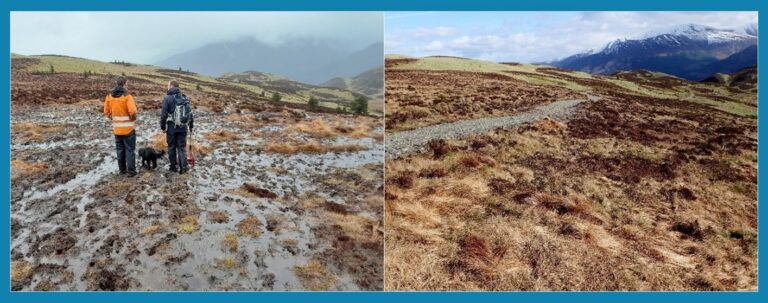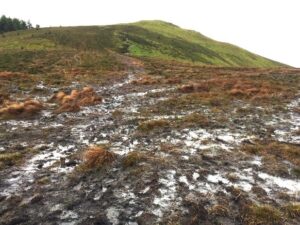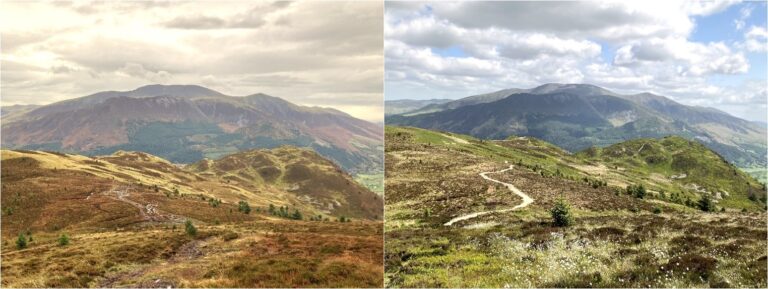Barf to Lords Seat

Location
Just west of Bassenthwaite
Legal status
Public Right of Way footpath
Path use
A well-used footpath connecting two Wainwrights and forming part of circular walks around Whinlatter.

Just west of Bassenthwaite
Public Right of Way footpath
A well-used footpath connecting two Wainwrights and forming part of circular walks around Whinlatter.
None known
No previous path management work had been done on this section of open moorland above Whinlatter Forest. However, the peat degradation and erosion had reached a point where intervention was required to protect the area’s vulnerable vegetation. In addition, the middle section can get very wet and people spread out to find a drier line, further exacerbating the problem.

The gradient and terrain of this site made it eminently suitable for a subsoil path which was created by machine using onsite materials. A sustainable path surface was created with a turfed side drain to keep people on a single line and, in time, to allow the surrounding vegetation to recover. The contractors excavated a new section of subsoil path with features including a 50cm deep block of substrate to form the path, aggregate water bars and a crossfall to the path surface to shed the water from the path line and an undulating side ditch to both retain water on the fellside and keep the path dry.
As well as the path and ditch, they landscaped out the braided area created as people looked for a dry way through a wet fellside. Techniques used here are more traditionally used in peat restoration projects, for example bare peat was re-vegetated, hag edges were removed and drainage channels were dammed using peat and/or vegetation. Occasional self-seeded, non-native Sitka spruce saplings were removed to reduce water loss. As the peat gets wetter, it reverts to its original state and that, in itself, will limit further self-seeded trees establishing.
The work was carried out by contractors and cost £18k and provides a sustainable route through the peat.
